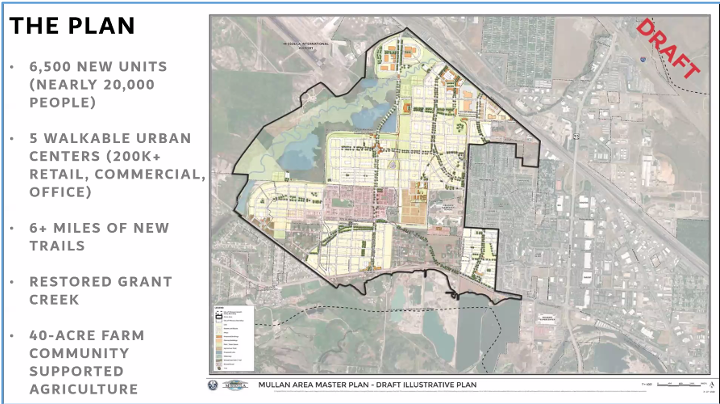How to move your community’s master plan process online: A case study
A Collaborative Master Plan Process employs multiple online platforms, hears from a wide cross-section of residents, and never misses a beat.

Across America in 2020, community master planning projects are quickly pivoting from in-person activities to online, virtual programs. In this article, we highlight a local planning process that made an online transition within a matter of days, while maintaining its goals for collaborative design and smart growth. This transition was achieved through a variety of online tools, staff flexibility, and public trust.
The National Charrette Institute (NCI) at Michigan State University and the Form-Based Code Institute/Smart Growth America (FBCI) are hosting a current series of webinars on virtual community engagement. The NCI is a joint effort with MSU Extension and MSU's School of Planning, Design and Construction (SPDC). The first webinar in the series highlights lessons and successes achieved through an online charrette process hosted by the city of Missoula and Missoula County, Montana for their collaborative Mullan Area Master Plan (MAMP). The complete webinar can be viewed here. The MAMP reflects a transformative way of working and planning together toward goals of resiliency, health, and prosperity, all of which are the mission of the NCI and FBCI. This webinar highlights every facet of the charrette process, focusing on how the project was launched online, levels of engagement, readiness, and next steps.
With charrette-based design and planning services of Dover, Kohl & Partners, the ongoing MAMP process focuses on 2,000 acres of open space and farmland facing development pressure due to a federally funded future road project. The charrette process began with in-person meetings prior to stay-at-home measures, including a significant amount of time spent identifying stakeholders, creating a schedule of events and deliverables, collecting background data about the area, and identifying its main planning issues in the preceding months. As of March 2020, Missoula was “charrette-ready” and prepared to begin an intensive design studio with input from a wide range of community members and partners. Due to COVID-19, the infectious disease caused by novel coronavirus, it was clear to the city, county, and partners that an in-person charrette studio was not feasible. Instead, the quick pivot to an online charrette began.
Transitioning the MAMP from in-person to online charrette occurred over a matter of days. First, an online hub was created through the website host company Squarespace. There are many website hosting companies available if a local government’s own web host is not able to help. A quick look at the costs and capacity of multiple host companies can help a local planning office decide how to best move a planning process online. Microsoft PowerPoint was the format used for recording presentations and there are many other presentation formats that allow for recording, such as Articulate. MAMP partners used YouTube for posting recorded presentations and other films and for embedding those resources into the project hub. Using these tools, the hub received over 18,000 visits during and after the scheduled charrette studio event.

The weeklong charrette event included a virtual studio that was streamed live online in one-hour increments each day. It was during these daily live studio events that partners and the public could interact with the design team, and city and county representatives. The platform Microsoft Teams served as the interactive home for the weeklong virtual charrette studio – allowing meetings, chats, data sharing, and other collaborative activities between the MAMP team and studio visitors. Scheduled stakeholder meetings were organized through the low-cost web calendar Tockify and the free WebEx meetings website. To supplement online meetings, 26 mini-films were posted on the hub to provide up-to-date activity summaries and overviews of design renderings such as The Plan draft map shown here. Ultimately, almost 300 attendees participated during the weeklong charrette studio, in addition to over 2,400 views of the mini-films to date.
Staff flexibility and public trust are two human elements that contribute to the success or challenges of an online planning process. During the MAMP charrette process, recommendations were identified to keep a project on track while respecting the newness and anxiety that might occur with reformatting a large project. First, staff and primary stakeholders should remember to not replicate the exact format of planning activities of the past. The length of presentations needs to be shorter, materials need to be electronic, and outreach methods must be modified to reflect the needs of communities during shelter-in-place and social distancing orders. In addition to online formats, landline telephone and cell phone town halls can reach a broad section of residents. Think in terms of providing small bites of information through multiple modes of distance engagement.
As communities move forward through COVID-19, traditional planning projects are pivoting to online formats and are reaching more people than ever before. Staff is thinking creatively when adapting time-tested processes to the new online reality and the public is engaged at a higher level. In the future, communities should maintain a strong online presence to take the place of and supplement in-person programming. This shift toward online collaboration reaches new partners and better serves persons who are not able to participate in-person due to a range of personal abilities or access to transportation. This expansion of reach and engagement creates a more valuable master plan. These goals and outcomes of collaborative design should be maintained well into the future.
To learn more about the MAMP Case Study webinar and to register for NCI’s ongoing webinar series, please visit Virtual Engagement Webinar Series.
Also available online is information about local and tribal governmental tools and resources related to COVID-19 response.



 Print
Print Email
Email




